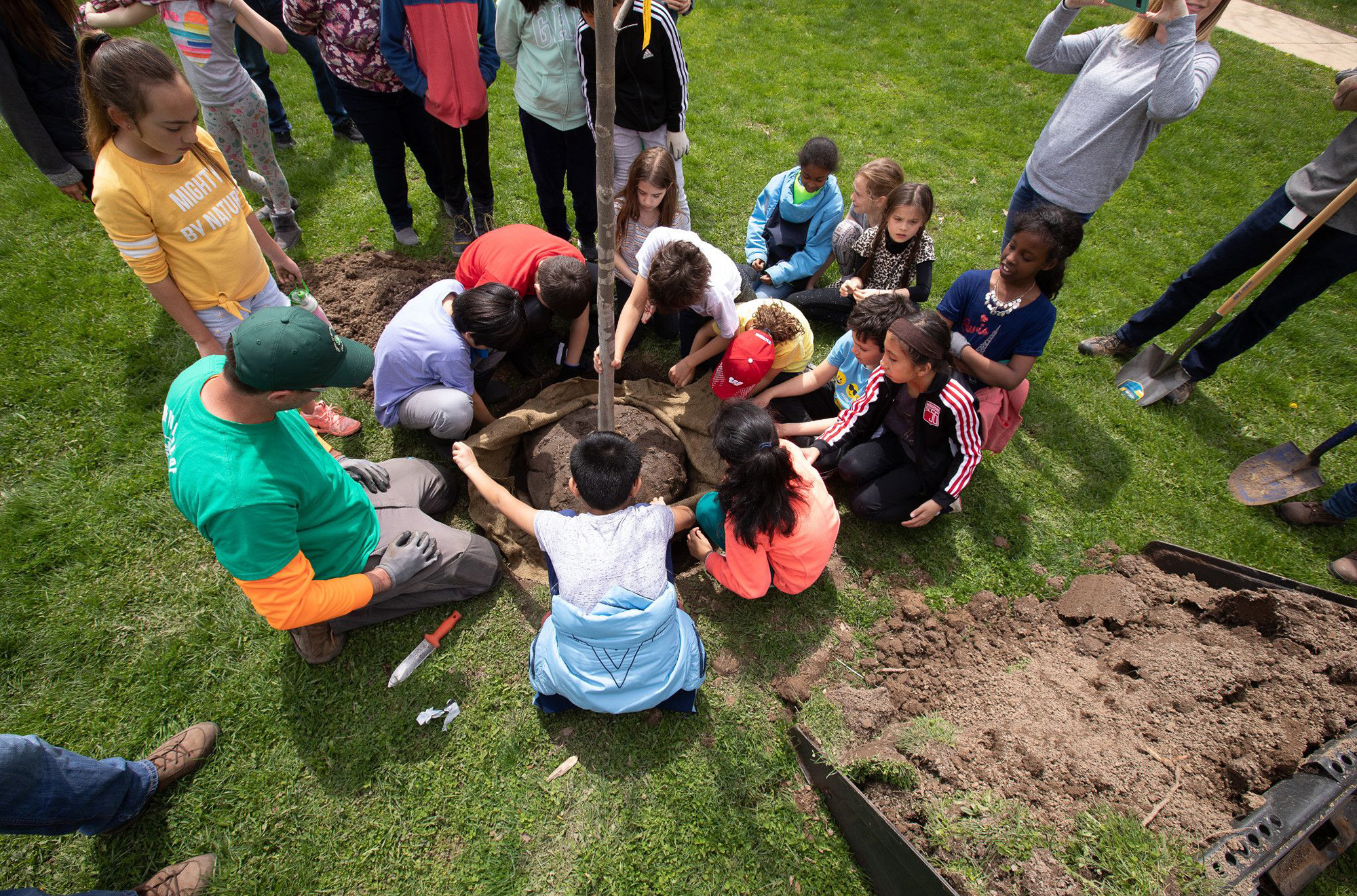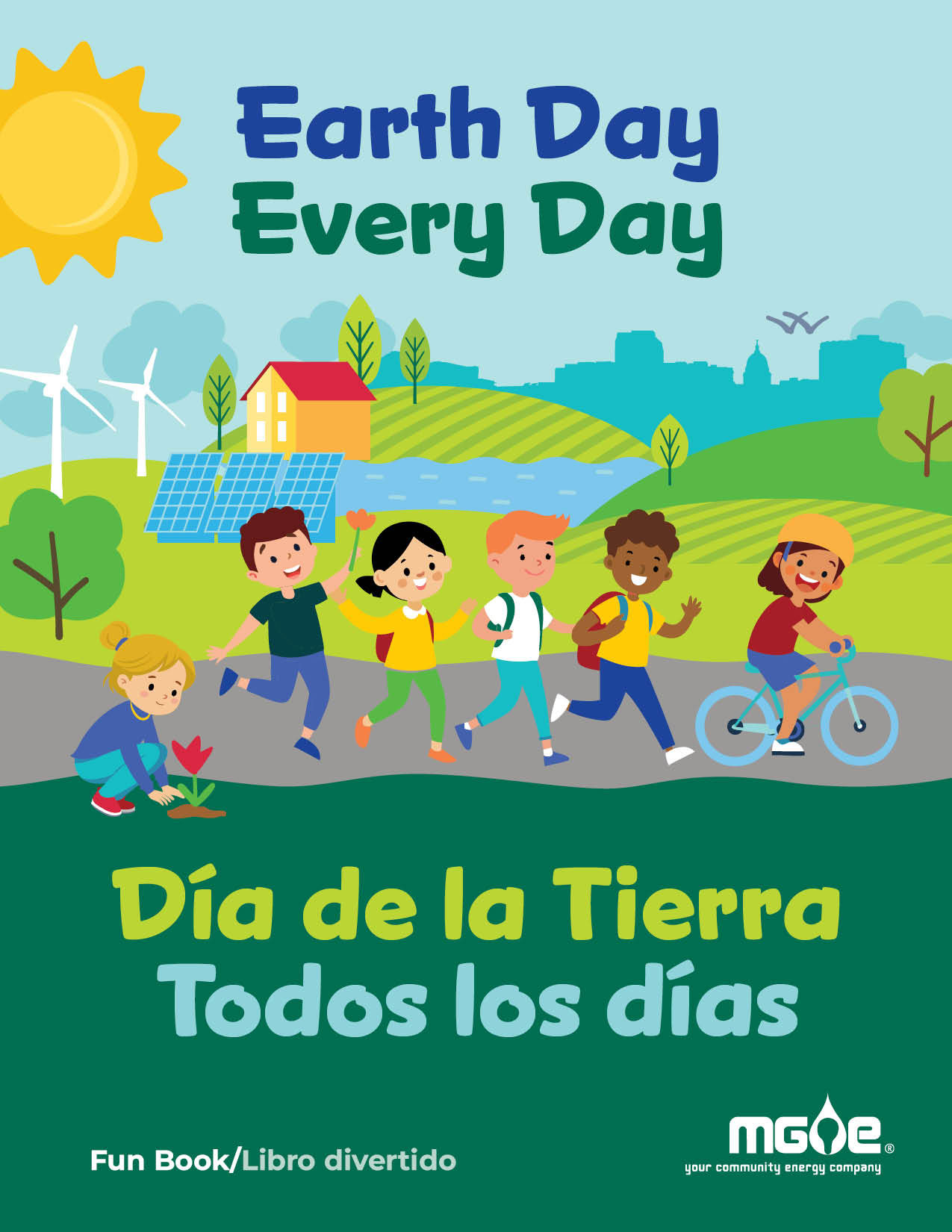
Earth Day

April 22 is Earth Day, a day to celebrate and support the environment. Founded in 1970 by Gaylord Nelson, a former Wisconsin governor and senator, the first Earth Day marked the beginning of one of the most successful environmental movements in the world.
MGE educational resources
In celebration of Earth Day, our Schools Partnerships Team visits several schools in the MGE service area and offers activities to engage and inspire students in sustainability and the wise use of energy.
We also participate in Arbor Day activities, including tree plantings and presentations on tree pruning with MGE's ISA Certified Arborists.
Earth Day Fun Book
Download MGE's bilingual Earth Day Every Day Fun Book, designed for children in grades 3-5!
To order free copies, please fill out the form below. We will mail them to you at no charge.
More information
Visit our partner's website, NatureNet, for additional Earth Day resources and events.

